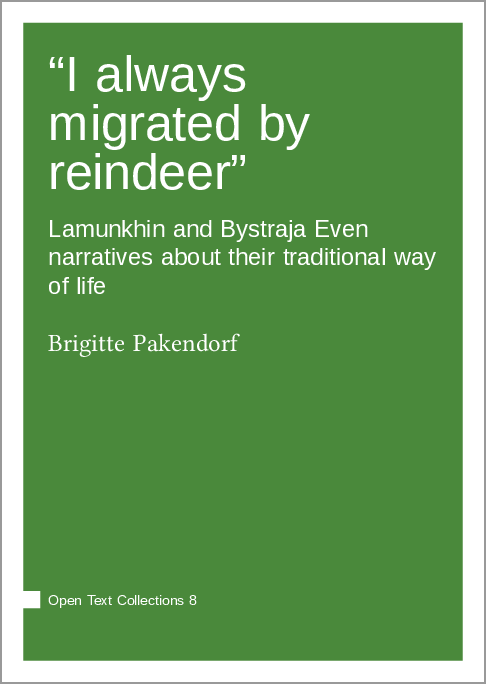We log anonymous usage statistics. Please read the privacy information for details.
Forthcoming: I always migrated by reindeer: Lamunkhin and Bystraja Even narratives about their traditional way of life
Synopsis
Even is an endangered Northern Tungusic language spoken in numerous small settlements by formerly completely nomadic hunters and reindeer herders dispersed over northeastern Siberia, from the Lena-Yana watershed in the west to the Sea of Okhotsk and Kamchatka in the east. This geographical spread has led to considerable dialectal fragmentation, with substantial differences between the peripheral dialects, not least due to differential contact influence.
This text collection contains a selection of monological narratives from two geographically distant and linguistically divergent Even dialects: Lamunkhin Even spoken in the village Sebjan-Küöl in the Kobjaj district of Central Yakutia, and Bystraja Even spoken in two villages of the Bystraja district of Central Kamchatka. Of these, the Lamunkhin dialect is still relatively viable, being spoken by some children and adolescents, while Bystraja Even is highly endangered, with no fluent speakers younger than 50 years.
The overall theme of the volume is the traditional Even way of life, namely reindeer herding and hunting and, in Kamchatka, fishing. Reindeer herding has always been a defining way of life of the Evens and other so-called Indigenous Small-numbered Peoples of the North; this is reflected in their language, culture, and identity. However, it is becoming increasingly endangered, making its documentation important for anthropologists and community members alike.
The collection comprises excerpts from 16 recordings made between 2007 and 2010 and amounting to nearly 8,000 words in total. Excerpts were chosen to be maximally informative with respect to the traditional way of life, but also to be interesting to read and to include linguistically interesting and important features of Even. In order to make the texts usable for the Even communities, a vernacular version of each text is included. This consists of the Cyrillic transcription used in the communities with a parallel Russian translation.



